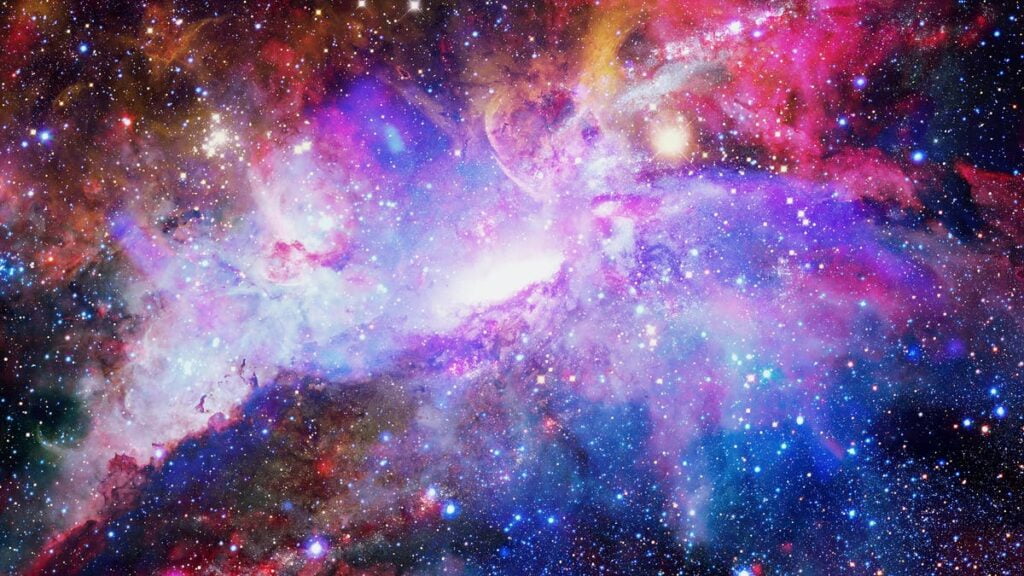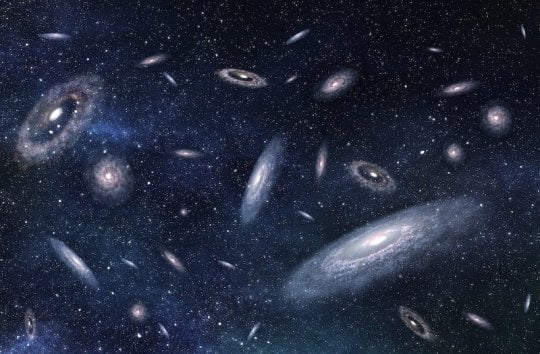A new map of dark matter in the universe sheds more light on several previously unknown filamentary structures that connect galaxies together.
The map, developed using machine learning by an international team that includes a Penn State astrophysicist, could enable studies on the nature of dark matter, the history and future of our universe.
What is dark matter
Dark matter is an elusive substance that makes up 80% of the universe. It also provides the “skeleton” of what cosmologists call the cosmic network, the large-scale structure of the universe that, with its gravitational influence, dictates the motion of galaxies and other cosmic material.
However, the distribution of dark matter is currently unknown. We still don't know how to measure it directly.
Researchers infer its distribution based on its gravitational influence on other objects in the universe, such as galaxies.
So far, so close
Ironically, it's easier to study the distribution of dark matter much further away "because it reflects the very distant past, which is much less complex," he says. Donghui Jeong, associate professor of astronomy and astrophysics at Penn State and author of the study.

“Over time, as the large-scale structure of the universe has grown, the complexity of the universe has increased, so it is inherently more difficult to make measurements on dark matter at the local level.”
Previous attempts to map the cosmic web began with a model of the early universe. From this model the evolution over billions of years was then simulated. A computationally demanding method, which so far has not produced sufficiently detailed results.
Hunt for the structure of galaxies
In the new study, the researchers took a completely different approach. With machine learning, they developed a model that exploits information on the distribution and movement of galaxies to predict the distribution of dark matter.
The researchers built and trained their model using a large set of galaxy simulations, called Illustris-TNG, which includes galaxies, gas, other visible matter and dark matter. The team specifically selected simulated galaxies comparable to those of the Milky Way and ultimately identified which properties of the galaxies are needed to predict the distribution of dark matter.
Simulated experience
“When given certain information, the model can essentially fill in the gaps based on what it has previously observed,” Jeong says.
“The map of our models doesn't quite fit the simulation data, but we can still reconstruct very detailed structures. We found that including the movement of galaxies as well as their distribution drastically improved the quality of the map and allowed us to see more detail. '
The resulting map of the local cosmic network is published in an article appeared online May 26 in the Astrophysical Journal.
How the new galaxy map is made

“Having a local map of the cosmic web opens a new chapter of cosmological study,” Jeong said. “We can study how the distribution of dark matter relates to other emission data, which will help us understand the nature of dark matter. And we can directly study these filamentary structures, these hidden bridges between galaxies.”
For example, it has been suggested that the Milky Way and Andromeda galaxies could move slowly towards each other, but it is unclear whether they could collide over many billions of years. Studying the dark matter filaments connecting the two galaxies could provide important insights into their future.
“Because dark matter dominates the dynamics of the universe, it essentially determines our fate,” Jeong said. “So we can ask a computer to evolve the map over billions of years to see what will happen in the local universe. And we can evolve the model back in time to understand the history of our cosmic neighborhood."
The researchers believe they can improve the accuracy of their map by adding more galaxies.


